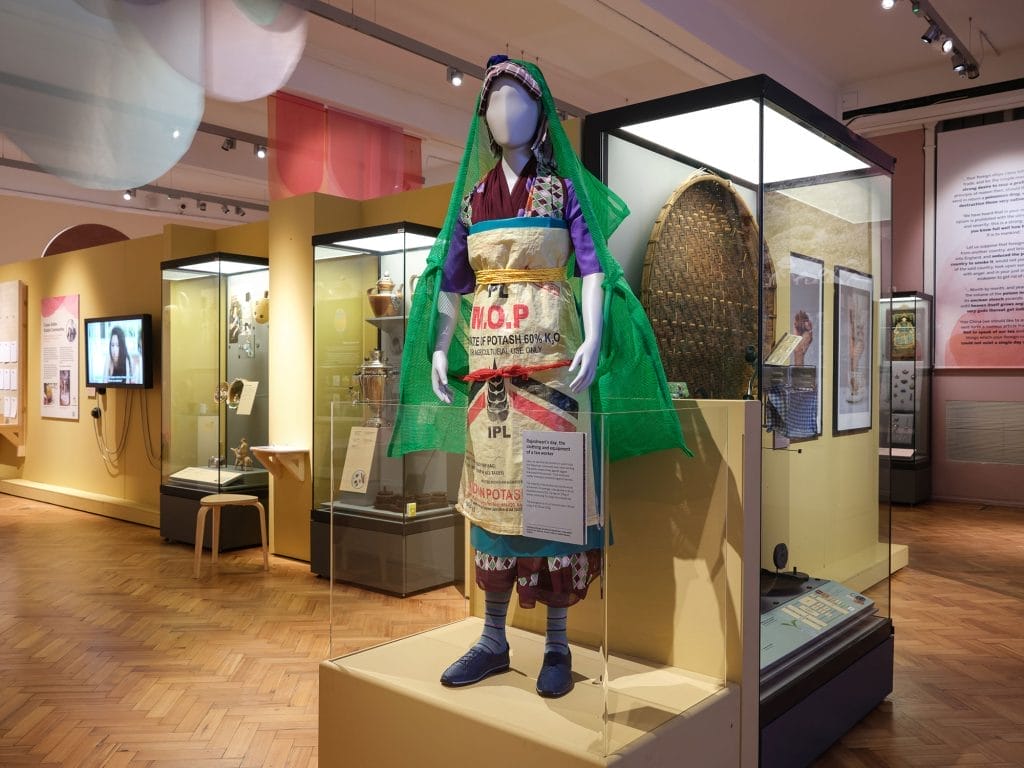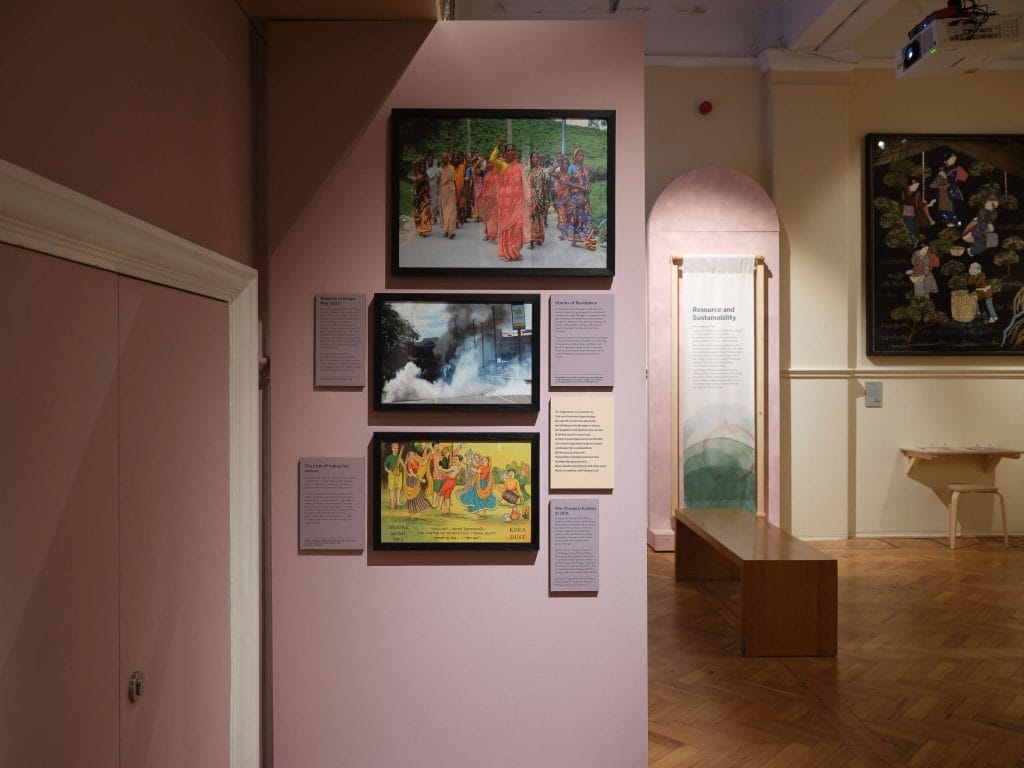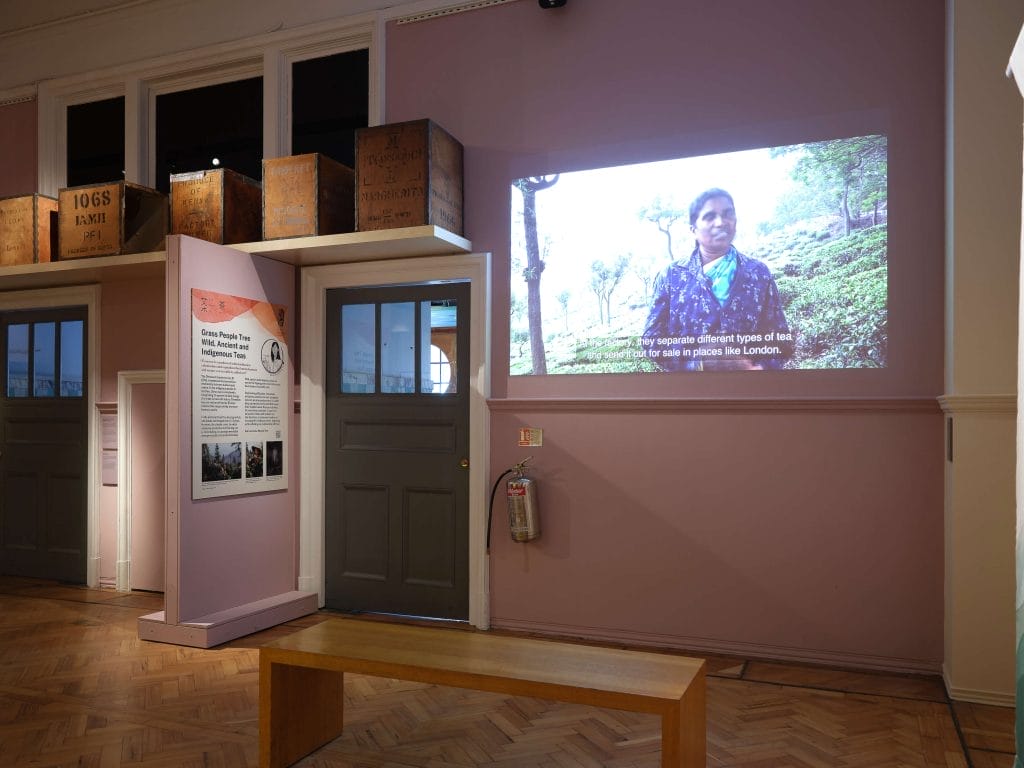Globally, 13 million people are officially employed in the farming and production of tea. Tea is produced in over 60 countries, with the top three global producers being China, India and Kenya.
Many of the workers plucking, processing and packing our teas are from families that have done this work for generations. Many of the tea estates they work on were established during colonial rule.
Today’s workers face a range of challenges relating to living and working conditions, discrimination, safety and wages.
Nonetheless, for many tea workers, their tea estates are their homes, where they grew up and where their children, parents and friends live. Their stories and experiences are often untold and unheard.
Tea workers tools
Tea making is a labour-intensive process. Pluckers are responsible for harvesting the tea leaves in hot, humid climates where tea is best suited to grow. Processing the tea leaves involves withering, oxidisation (which determines the colour and strength of the tea), firing and drying.
Today, the steps are the same as they have been historically, but much of our tea is processed in factories. Only the highest quality teas are prepared using traditional methods.
As mechanical harvesting becomes more widespread, thousands of tea workers’ jobs are at risk, and many are being made redundant.
Photo of tools
Clothing and equipment

Items donated and sourced in Munnar, Kerala, India and Kinnakorai, the Nilgiris, Tamil Nadu, India by Sabita Banerji of THIRST
This is an example of what tea pluckers in south India commonly wear when working. The plastic sheets shield against jagged branches of the tea bush. Thick socks and rubber shoes give protection against leeches.
The majority of tea pluckers across the world are women. On average, a tea plucker in south Asia earns around £2-3 a day for 20kg of leaves, producing 3-4kg of processed tea.
The average price of our favourite tea in Britain today is £2.50 per 250g.
Tea and Indentured Labour
In the 19th Century plantation recruiters promised poor and vulnerable families paid work in their tea estates. Families were often moved hundreds of miles across the country to their tea estates and made to sign contracts that fixed their wage and housing. The documents criminalised any contractual breaches or attempted renegotiation. Plantation owners were also given the authority to administer punishments at their whim.
Far from home, labourers were given low wages, insufficient food and were physically, mentally and sexually abused.
Many perished in an environment of fear and violence. Yet many tea workers had no choice but to stay, fearing homelessness and destitution without work or shelter.
In response to the inhumane conditions, tea workers began rising up against tea plantation owners and estate managers, risking their lives and livelihoods for better living and working conditions.
Methods included mass desertions and non-cooperation. Attacks and violence against managers and owners were also common. In Spring 1921 around 30,000 tea workers started a mass walkout from plantations in Chargola Valley, Assam to make their way home. This was a protest against the indentured labour system with harsh working conditions and wages so low that workers and their families were dying of hunger.
By May, part of the group made it to Chandpur train station (today in Chittagong, Bangladesh). There the Assamese colonial police opened fire on them. Many were killed, with their bodies thrown into nearby rivers. The incident sparked outrage and further fuelled a call for an independent India.
Today, tea workers around South Asia and East Africa are still actively protesting for better pay, compensation, better living conditions, job security, personal safety and fair treatment.
In May 2023 residents of Kericho County, Kenya, protested against the practices of Lipton Tea and Infusions, owned by Unilever. They were demanding that the multinational company use more local employees as tea pickers.
The protestors torched two green leaf plucking machines, seven motorised hand machines and a tractor on the Kagporech tea estate before driving one of the machines to a trading centre and setting fire to it on the roadside. The second photo down in the image below shows the protestors buried in smoke after police fired teargas to disperse them. Local news reported that protestors, who they described as ‘youths’, police and a journalist were all injured.
These acts of resistance are reminders of the unfair systems in which tea practices are rooted.

Stories of resistance in the 茶, चाय, Tea (Chá, Chai, Tea) exhibition
Tea Crates
These tea crates from India and Kenya, dating back to the 1960s, were found in the Horniman’s object store. They were being used as storage boxes.
Many of the locations of the crates, such as Assam, India, Ceylon (today, Sri Lanka) and Kericho, Kenya are locations where people were displaced to cultivate tea, or where estates enforced indentured servitude. The crates connect the Horniman today to the tea business, tea estates and their colonial legacy.

Tea crates sit on a shelf in the 茶, चाय, Tea (Chá, Chai, Tea) exhibition
Tea Crate from Jamji, Kericho, Kenya
One of the tea crates is from Kericho, Kenya. In 1895, the Kipsigi and Talai peoples were violently displaced from their homes in Kericho, so that the land could be used by the British to cultivate tea commercially.
The displaced people were termed ‘settlers’ and moved to disease-prone reserves or detention camps. Forced to work, they suffered physical and mental abuse. They were given no compensation. Their descendants continue to campaign for justice.
Kericho and its neighbouring counties account for 46% of tea production in Kenya. The country is one of the top exporters of tea in the world.
Over half a million people are employed through the production of tea.
Lead image: Photo by AMIT RANJAN on Unsplash


